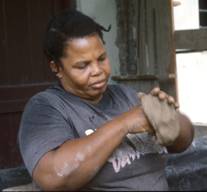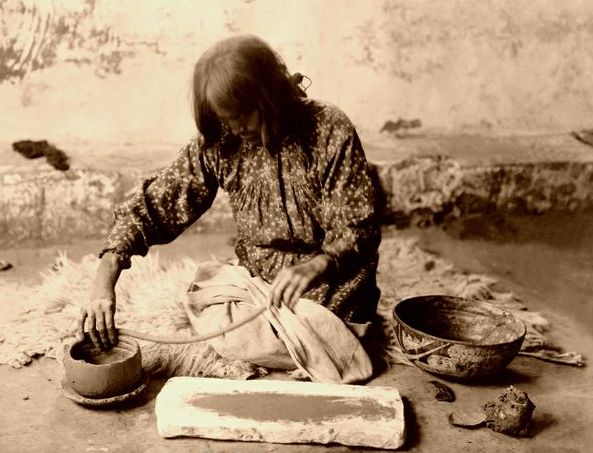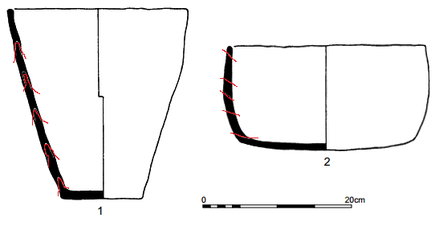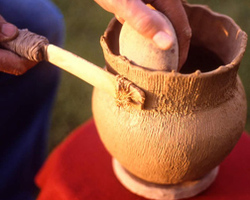Construction techniques were simple. It is possible to produce a sophisticated result with the simple techniques used but most often it seems the people of the time did not bother. Function was more important than form.

PINCHING is a simple technique whereby a ball of clay is teased out into the form between finger and thumb by repeated pinching and pulling. Careful control allows the form to be maintained in terms of symmetry and thickness. There is a limit of circa 10cm in height before this technique is no longer possible.
A pinch pot can be the base of a large pot if coils are added.
A pinch pot can be the base of a large pot if coils are added.
|
COILING uses rolled-out sausages of clay which are then assembled by fixing them in a superimposed pile to form the sides of the pot. If this is done with stiff clay and in phases then a very large pot can be made. Once the basic structure is made the pot can be scraped and finished to produce a much lighter result than the initial heavy coiled construction.
Pre-Viking pots in the Hebrides (1 at right )show coils set together smeared downwards inside and outside giving a 'toungue and groove' effect in cross-section. Viking potters (2 at right) seem to have smeared downwards on the inside and upwards on the outside giving the appearance of lozenge-shaped coils in cross-section. |
REPOUSSE is a technique which is simple in principle but requires some skill. It is not hollowing-out (which would remove clay) but a pushing-out of the pot form from an initial clump of clay. A hole is pushed into the clay and then the walls are progressively raised outwards. The mouth of the pot is formed early on in the process and the final pot scraped to produce a good form.
COMBINATIONS of technique are possible. For example, a pinch-pot can be the base which has sides added by coiling.
TOOLS used by traditional potters are discussed HERE
ORNAMENT AND FINISHING OF POTS is discussed HERE
FIRING is discussed HERE
ORNAMENT AND FINISHING OF POTS is discussed HERE
FIRING is discussed HERE


